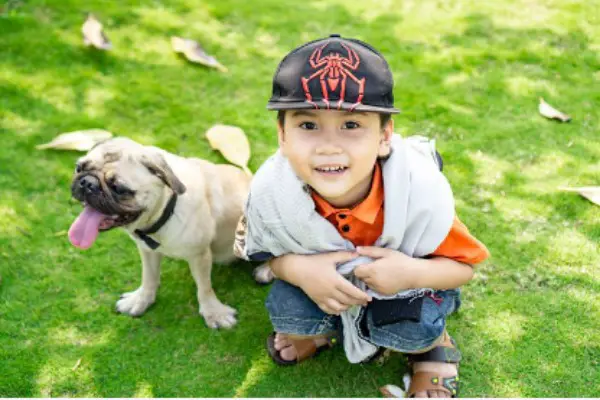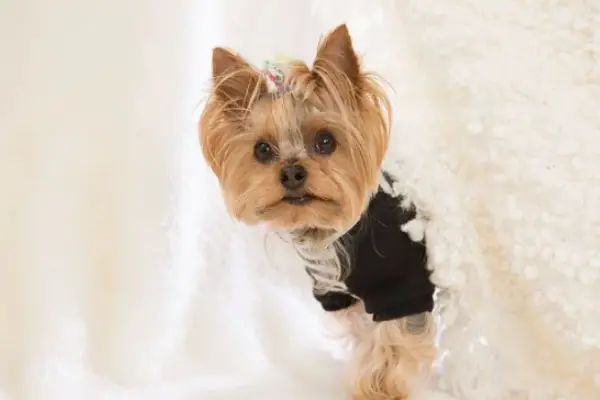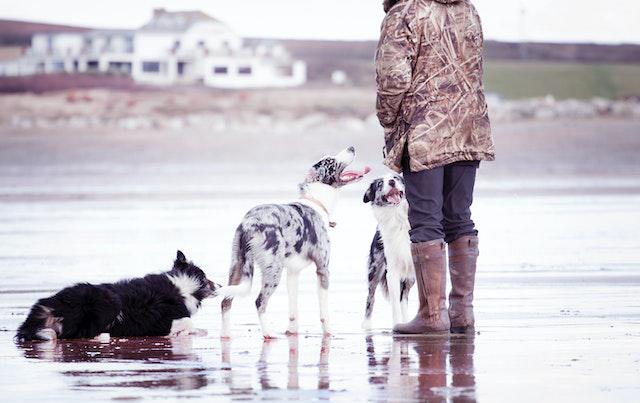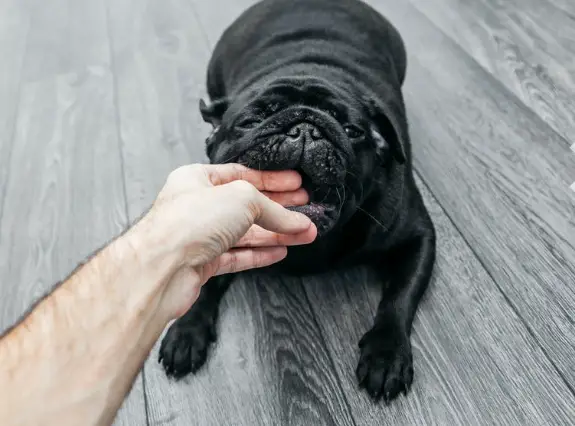Are Pugs Good With Kids (8 Pros, Cons & Tips)

Kids love dogs but not all dogs have the personality and temperament to be with kids, so are pugs good with kids! Let’s find out together.
I will be highlighting some of the common disadvantages of getting pugs for kids, I will also discuss the benefits.
Finally, I will outline and discuss some ways you can help kids to get along with pugs.
I will keep things simple and short, so continue reading…
Are Pugs Good With Kids
Pugs are sociable dogs who were bred specifically to be companion dogs; as a result of their gentle nature, they get along well with children and their families.
However, owing to their small size and the risk of accidentally harming any toy breed, kids must be taught how to handle pugs.
The shape of their nose makes it difficult for them to breathe when over-exercised, so you should watch how your kids play with pugs.
The good thing about pugs is that they are not aggressive, however, pugs can still be aggressive if not properly socialized.
Let’s talk disadvantages…
Why pugs are not good for kids
Before acquiring a pug for your kids, there are a few things to think about:
- Pugs are far too fragile to be handled by kids due to their size.
- Pugs are prone to heat exhaustion, and kids may overplay with them, resulting in future respiratory issues.
- Pugs are too little for rough-housing children.
- For a number of causes, such as inadequate socialization, pugs can become aggressive and attack kids.
- Pugs may bark a lot for a number of reasons which can affect kids.
- Pugs sleep under blankets, and your children may damage them if they sit on them.
- Pugs are commonly mistaken by youngsters as being powerful due to their tiny stature.
- Pugs are known for their tenacity, which can make training difficult for children.
- Loud noises can frighten pugs, and your children may like screaming or making loud noises.
- Pugs rapidly get obsessed with the ball, and if they don’t get it, they will nip or attack your kids.
There you have some reasons why you shouldn’t get the pug for your kids, however, most of these reasons can be fixed by early socialization and proper obedience training.
Let’s discuss the benefits of getting pugs for kids…
Why you should get pug for your kids
The following are some of the most compelling reasons to consider buying a pug for your children:
1. Pugs don’t have issues with kids picking them up
Picking up dogs is one of the challenges that little dogs face; nevertheless, properly trained and socialized pugs do not have this problem.
This is a significant benefit of getting a pug for your kids, as they will never have any difficulties playing with them if they are well-bonded.
Make sure they’ve been appropriately socialized before allowing them to be near your kids.
Pugs, on the other hand, require socialization from the time they are puppies in order to be comfortable with children and other animals.
2. Pugs can help kids get more exercise
Your child will be able to get more exercise with a pug because pugs adore running around with kids.
Children require exercise to keep healthy and happy, and pugs only require a minimal bit of activity, so having a pug for your children is a win-win situation.
To avoid damage to your pug, educate your children on how to properly handle and play with one.
Also, teach your kids when to stop while playing with your pug to avoid unnecessary health challenges associated with pugs like heat exhaustion.
3. Pugs easily bond with kids
Pugs are a low-energy breed that thrives in the company of children than most other breeds.
They enjoy showing their affection for children by sharing a bed and running about with them.
They are loving and friendly, making them ideal for families with children, but they require socialization.
They are dedicated to their owners and form close bonds with them. Pugs have a reputation for being attached to their owners to an unhealthy degree.
Pugs express their love for children by winking, weaving their tails, bunting, or rubbing their heads and faces against them.
If you and your kids over the age of eight desire a dog that will shower you with affection and never tire of you, pugs are a good choice.
4. Pugs can help kids avoid stress or depression
When kids are worried or sad, bonding with them is a terrific method to help them, and pugs may provide that attachment.
Stressed children might relax if they have a little dog to keep them company, such as a pug.
Pugs enjoy hopping all over children and playing with them, which may be comforting to children who are concerned.
Pugs may help your youngster cope with melancholy and stress, but they must be socialized with the rest of the family.
Depressed children may experience anxiety, but this can be alleviated if they have a little dog roaming about them searching for attention.
5. Pugs can help kids learn responsibilities
Taking care of a pug’s needs is a major responsibility that requires time, humility, and effort; this might benefit children who are active in pug care.
If your children are taught how to get up in the morning and care for their pug, this will reflect in their personality as they mature.
Because they started on time, your children will learn to be accountable for everything around them and their behaviors throughout time.
6. Pugs can keep kids busy while you are away
Pugs can keep kids entertained while you’re out shopping or doing other things.
Because pugs are so fascinating and funny, children may forget they have other things to do when playing with them, such as schoolwork.
When a pug sits on a child’s lap and wants to embrace them, it’s dreadful if your kids get up and go about their business.
If this is the case, your children may be late for an activity or take longer than necessary to complete tasks.
Pugs will frequently follow their favorite kid around the house.
If youngsters do not pay attention to them, they will make undesirable noise.
When properly taught, pugs are friendly with strangers, but they have a special bond with the children who look after them.
While at home, pugs will go to considerable lengths to locate and spend time with their favorite youngsters.
Pugs are notorious for following kids around the home while they play, which may help them learn how to connect with other canines and kids.
It’s pretty unusual to see pugs welcoming kids at the front door if they’ve been properly taught.
Pugs nearly seem to be able to express gratitude to the kids with whom they interact or are fed!
They can also assist your children in making new friends and maintaining old ones.
8. Pugs can help kids develop trust and patience
Pugs may help a child’s self-esteem while also instilling responsibility in them.
Pugs also teach your kids how to care for them, instilling in them a sense of trust and patience.
Small dogs, such as pugs, have a hard time embracing children at first, but over time, your children will acclimatize to your pugs, resulting in true human trust.
Having or living with a pug requires patience, which your children will undoubtedly pick up from you.
These are the common reasons, let’s look at how to help kids get along with pugs.
How to help kids get along with pugs
Here are some common ways to help kids get along with pugs or how to handle pugs:
1. Teach your kids not to yell at pugs
Pugs are normally friendly dogs, therefore loud noises and screaming may be frightening to them.
As a result, teach your children the value of never yelling or screaming at their pugs.
Non-essential barking, biting, nipping and other bad behaviors associated with pugs may arise from yelling or screaming at pugs.
2. Establish rules for both the kids and your Pug
Make certain that you set and follow precise home rules. Allowing your pug to eat from your child’s plate is not a smart idea (or vice-versa).
Ensure that children under the age of eight are not allowed to play with the pug toys in your absence.
Pet toys are not subject to the same safety regulations as children’s toys, and therefore might be fatal in the hands of children.
Make sure you follow your home rules to the letter, regardless of what they are.
3. Invite your kids during grooming
You should educate your children on the basics of brushing depending on their age and your lifestyle or daily routine.
There’s no reason why your kids can’t help you groom your dog, especially when it comes to combing and washing his coat.
You’ll have a helper who can take up these chores once your child is older, grooming is a great time to increase bonding.
4. Teach your kids how to handle your pug
Because pugs are little and soft, your children will want to squeeze them, but pugs are not toys, and this might lead to pug aggressiveness.
Teach your children how to care for and respect their pugs appropriately, as well as how to regard them as living creatures.
Your children should be aware that pugs, like people, have desires, feelings, and suffering.
Without being pushed or restrained, your children should be able to play with dogs.
5. Teach your kids how to pet pugs
It is your job as a pug owner to teach youngsters, whether your own or guests, how to properly pet your pug.
Begin by rubbing the dog’s chin or chest softly. Scratching is OK as long as your hands are kept away from the dog’s face or head.
Demonstrate to the child that light petting or scratching of the neck and back is OK if moderate petting/scratching of the chin/chest is acceptable. Make a 180-degree turn in the direction of the fur.
If the dog backs away, snaps, growls, or displays appeasement gestures or terrified body language, stop touching him.
6. Teach your kids how to pick up pugs
Teach your children how to pick up a pug puppy until they feel comfortable with their skills.
Squat down and cradle the puppy from the side with one hand on the rump and the other on the tummy/chest area, softly yet firmly.
Make it a point to practice with your kids simultaneously.
When your children are carrying their pug, teach them not to run, spin, leap, or swing them around.
Garlic and onions, two of the most deadly foods for pugs, may be found in a variety of recipes.
A small amount can cause gastrointestinal irritation in pugs, but it has no effect on humans.
Allowing your pug to nibble on your child’s food may result in begging, which is tough to avoid even with intensive training.
As a result, teach your children not to feed the pug their own food.
8. Teach your kids when to let your pug be alone
Teach your children to leave their Pug alone when it is eating, sleeping, or needs to be alone in any other way.
Teach your children when to let go. Your puppy will need space to grow, and your Pug will need to eat and relax.
If your children are always packed and eager to be near your Pug, this might be a nice guideline to follow to allow your puppy to take some natural breaks and relax.
I strongly hope your question Are Pugs Good With Kids was answered with the information provided on this page.





![How To Calm a Beagle Down [12 Interesting Hints] How To Calm a Beagle Down](https://petcreeks.com/wp-content/uploads/2023/05/How-To-Calm-a-Beagle-Down-768x555.jpg)
